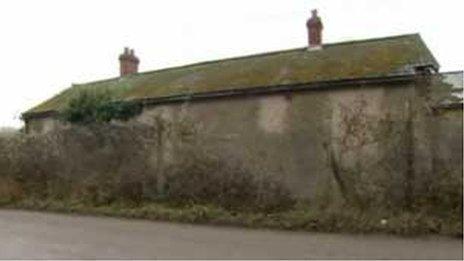Bat faeces 'shower' hits Norfolk Holme Hale parishioners
- Published

St Andrew's Church has a colony of about 300 Natterer bats
Bats "showering" parishioners with faeces and urine at a Norfolk church appear to have "more rights that the worshipping community", a vicar said.
A 300-strong colony of Natterer's bats roost in the roof of St Andrew's Church in Holme Hale but cannot be removed as they are a protected species.
Rev Stephen Thorp said the bats are "off-putting" and have made couples look elsewhere for their wedding.
The church hopes new ultrasound technology, external will resolve the problem.
The Home Hale colony, near Swaffham, is thought to be one of the biggest in England.
The bats, external tend to fly within the body of the church where excrement can then damage furnishings and sometimes irreplaceable objects of international significance, said experts.
'Pungent' shower
In some cases the colony can also restrict the use of a church for worship or other community functions.
Mr Thorp, who has been the rector at the church since 2006, said the "pungent" faeces and urine from the bats in the pitch of the church roof "showers down on anybody inside".
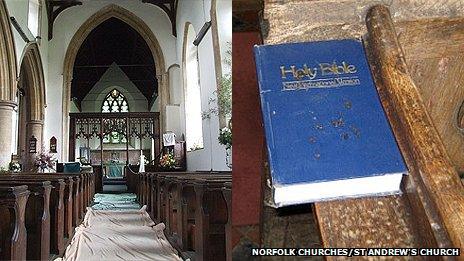
Bat guano falls from the ceiling to cover the church's interior
"This does an awful lot of damage and in the breeding season it's also possible for pubescent bats to fall from the roof onto the floor," he said.
Funded by Defra, researchers from Bristol University have been working at the Grade I listed building which has suffered from the effects of the large maternity colony for a number of years.
'Deeply sympathetic'
Possible solutions to "deter" the colony include the use of strong artificial lighting to create "no-fly zones" within the church and ultrasonic signals.
"We don't want to kill or harm the bats in anyway, but we do think it's fundamentally wrong that human beings and bats should be forced to share the same indoor dwelling space," said Mr Thorp.
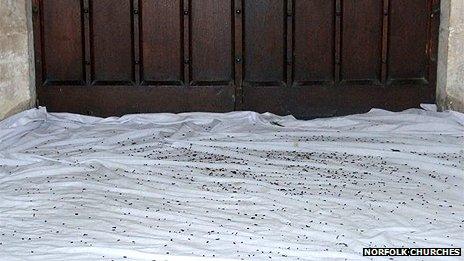
St Andrew's Church floor is covered to protect it from the bat droppings
"It's one of those cases where the bats seem to have more rights that the worshipping community and that's why we've been involved with Defra and Natural England to try and come to a reasonable solution to the problem, external."
Julia Hanmer, chief executive officer at the Bat Conservation Trust, said they were "deeply sympathetic" to the church community at Holme Hale who "experience real challenges due to an unusually large number of bats in a small church".
She added the trust was "committed" to helping churches and where problems are experienced to find "lasting solutions that help both people and bats".
- Published17 November 2013

- Published5 August 2013
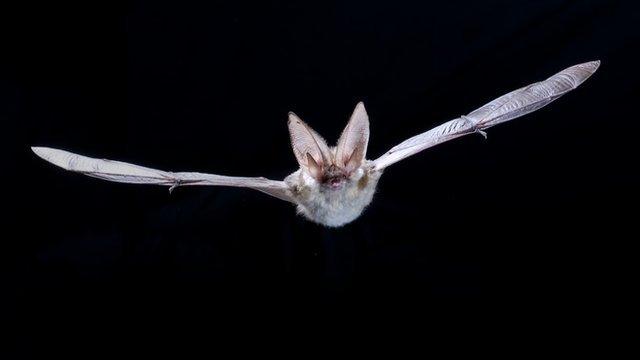
- Published18 June 2013
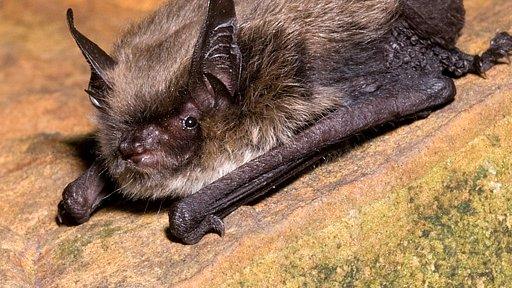
- Published29 May 2013
